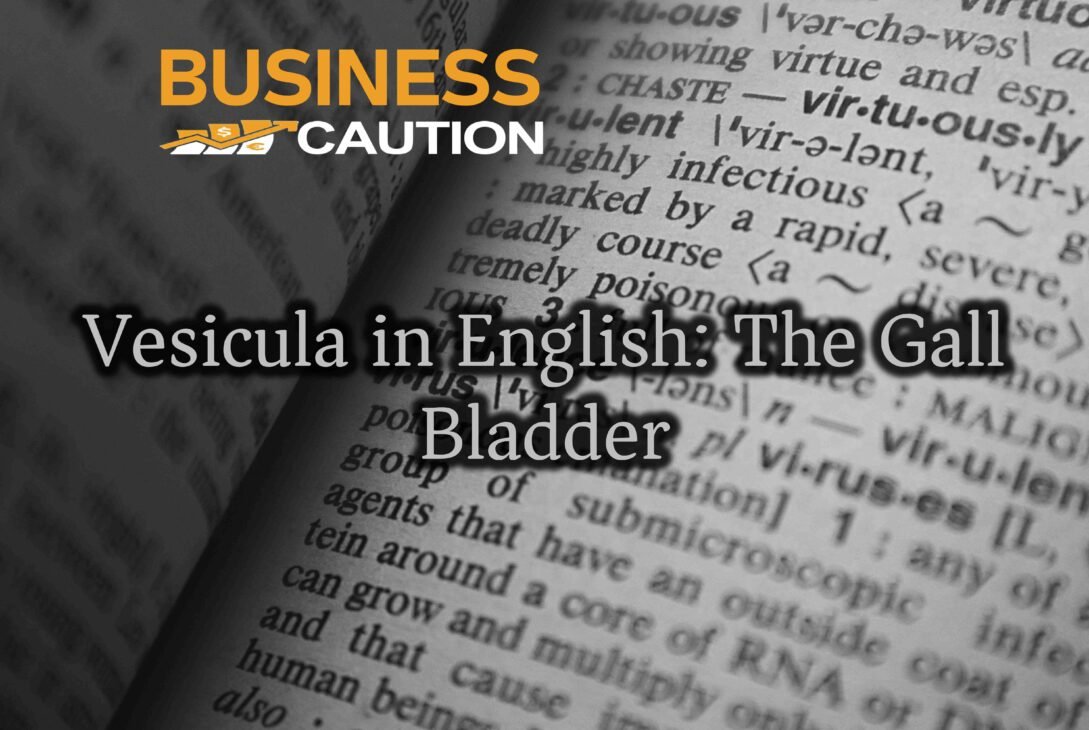What is Vesicula in English?
The gall bladder, known as “Vesicula in English” The Gall Bladder, is a small organ beneath the liver. It plays a crucial role in digestion by storing and concentrating bile produced by the liver. This bile aids in the breakdown of fats during the digestion process.
Vesicula in English: Importance of the Gall Bladder
The Vesicula in English, or gall bladder, may seem insignificant, but its function is vital for proper digestion. Picture this: after a hearty meal, especially one rich in fats, your gall bladder springs into action, releasing bile into the digestive tract to help break down those fats into smaller, digestible molecules. This process can be disrupted without a properly functioning gall bladder, leading to digestive issues and discomfort.
Unraveling the Mystery of Vesicula in English
Vesícula, or the gall bladder, is a marvel of nature tucked away beneath your liver, quietly carrying out its crucial role in the digestive process. This small, pear-shaped organ may not get the spotlight it deserves, but its contributions to your well-being are nothing short of remarkable.
The Anatomy and Functionality of Vesícula
After indulging in a sumptuous meal, your body goes to work breaking down the nutrients you’ve consumed. Enter the gall bladder. This tiny reservoir stores bile, a yellowish-green fluid produced by the liver, until it’s needed for digestion. When food, especially fats, enters your small intestine, the gall bladder contracts, releasing bile into the digestive tract. Bile aids in emulsifying fats, breaking them down into smaller particles that are easier for your body to absorb.
Navigating the Complexities of Digestive Health
While the vesícula plays a pivotal role in digestion, it’s not immune to issues that can arise. One of the most common culprits is gallstones – hardened deposits that form in the gall bladder. These stones can range in size from tiny grains of sand to larger, pebble-like formations. When gallstones obstruct the bile ducts, they can cause intense pain and discomfort, often referred to as biliary colic.
Recognizing the Signs and Symptoms
How do you know if your vesícula is acting up? Pay attention to your body’s signals. Symptoms of gallbladder issues can vary but often include:
- Persistent pain in the upper right abdomen
- Nausea and vomiting
- Fever and chills
- Jaundice, indicated by yellowing of the skin and eyes
If you experience any of these symptoms, it’s essential to consult with a healthcare professional for proper diagnosis and treatment.
Navigating Treatment Options
Fortunately, there are several treatment options available for gallbladder issues. In cases of mild discomfort, lifestyle modifications such as dietary changes and weight management may be sufficient to alleviate symptoms. However, for more severe cases, surgical removal of the gall bladder, known as cholecystectomy, may be recommended. This procedure is often performed laparoscopically, resulting in shorter recovery times and minimal scarring.
Vesicula in English: Anatomy and Location
Let’s delve a bit deeper into the anatomy of the gall bladder. It’s a small, pear-shaped organ nestled snugly beneath the liver, on the right side of your abdomen. Its size can vary among individuals, but on average, it’s about three to four inches long. Despite its modest size, the Vesicula in English plays a big role in ensuring smooth digestion.
Vesicula in English: Common Issues and Symptoms
Now, onto the nitty-gritty – what happens when things go awry with your gall bladder? Well, unfortunately, it’s not uncommon for this little organ to cause some big problems. One of the most common issues is the formation of gallstones, which are hardened deposits that can block the flow of bile and lead to excruciating pain, known as biliary colic. Other symptoms of gallbladder problems include nausea, vomiting, and jaundice.
ALSO READ: https://businesscaution.com/2024/05/11/hey-in-spanish-the-cultural-connections/
Treatment Options
So, what can be done if you’re experiencing gallbladder woes? In some cases, lifestyle changes such as adopting a healthier diet low in fats and high in fiber can help manage symptoms. However, for more severe cases, surgical removal of the gall bladder, known as cholecystectomy, may be necessary. Fortunately, thanks to modern medical advancements, this procedure is often minimally invasive and can provide significant relief from gall bladder-related issues.
Conclusion
In conclusion, while the vesícula may be small in size, its importance in the digestive process cannot be overstated. Understanding its role, common issues, and treatment options can help you better care for this often-overlooked organ and ensure smooth sailing on the seas of digestion. So, here’s to your gall bladder – may it stay healthy and happy for years to come!
Last modified: May 15, 2024


















